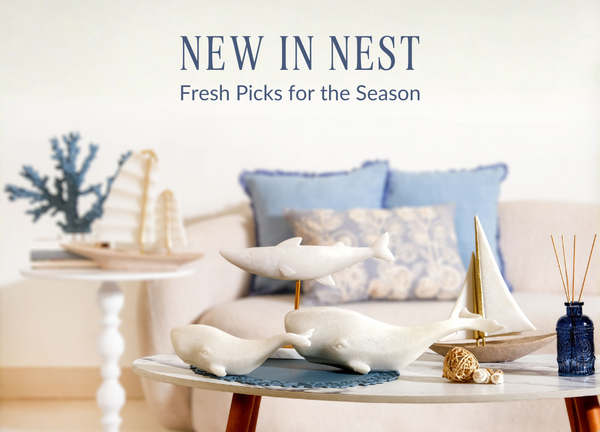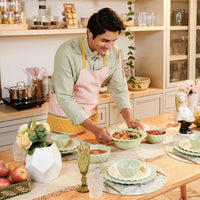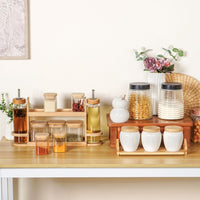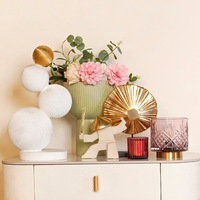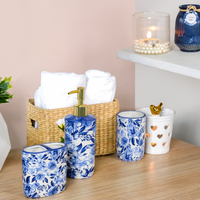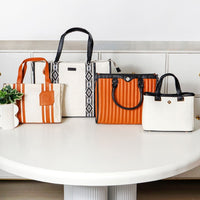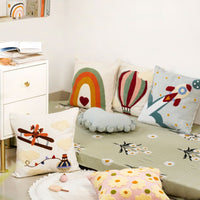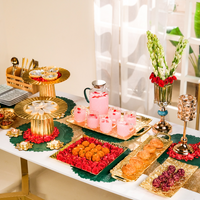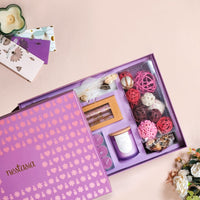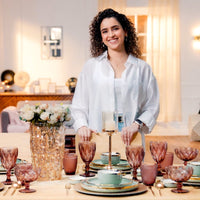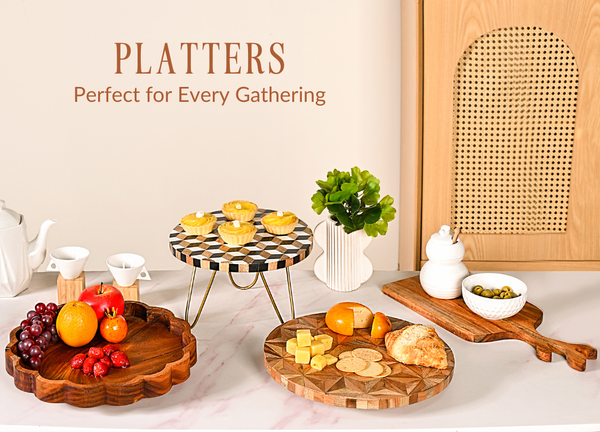The kitchen is not just where meals are prepared - it’s a space that fosters warmth, connection, and creativity. The colours you choose for your kitchen have the power to influence the atmosphere and your mood while cooking and spending time with your family. By understanding colour psychology, you can create a kitchen that’s both aesthetically pleasing and functional. This blog explores popular kitchen colours, their emotional impact, and how to combine them effectively.

What Is Colour Psychology?
Colour psychology studies how different colours affect human emotions and behaviour. In home interior design, each colour conveys unique feelings that influence the room’s ambience. Kitchens can benefit significantly from mindful colour choices, as the right colours can inspire creativity, boost energy, and enhance the joy of cooking. While some colours create calmness and relaxation, others add warmth and vitality - perfect for a space where families gather to eat and share moments.

The Role Of Different Colours In Kitchen Interiors
Choosing colours for the kitchen isn’t only about aesthetics, it’s also about setting the right tone. Each colour brings its own energy, making the kitchen a unique blend of comfort and liveliness. Here are the colours that can transform your kitchen and the feelings they inspire.
1. Soft Blues
Emotions associated with blue: Soft blues bring a sense of calm, peace, and relaxation. Blue, a naturally soothing colour, is often associated with clarity, helping to reduce stress and create a serene environment.
Why choose soft blues for your kitchen?
Blue can be an excellent choice for kitchens where you want a relaxing atmosphere. Light blue hues can make the kitchen feel fresh and spacious, enhancing focus while preparing meals. Soft blues work well with white or light wood accents for a refreshing, airy feel that’s perfect for unwinding.
Explore: https://nestasia.in/collections/cookware

2. Warm Yellows
Emotions associated with yellow: Yellow is cheerful, optimistic, and energising. Known to boost spirits and make a space feel brighter, yellow often adds a sense of warmth and friendliness.
Why choose warm yellows for your kitchen?
Warm yellows create a sunny, inviting kitchen space that feels welcoming and cosy. This colour is ideal for morning routines, as it brings in positivity and a lively ambience. From pale buttery shades to vibrant mustard tones, yellow can make your kitchen a happy, uplifting space, ideal for gatherings.

3. Inviting Greens
Emotions associated with green: Green represents harmony, growth, and balance. Different shades of green are often related to evoking feelings of calmness and renewal.
Why choose inviting greens for your kitchen?
Green shades, from soft sage to deep forest green, bring an earthy, natural feel to the kitchen, making it feel rooted and fresh. Green is also said to stimulate appetite and give the kitchen a farmhouse feel, especially when paired with natural wood or cream accents. It's ideal for kitchens that aim to feel peaceful, fresh, and grounded.

4. Bold Reds
Emotions associated with red: Red is energetic, passionate, and bold. It’s a hue that can create an invigorating and lively environment.
Why choose bold reds for your kitchen?
Red can boost energy and stimulate appetite, making it an excellent choice for kitchens where activity is central. Bold reds as accents on cabinets, backsplashes, or small appliances can add warmth without overwhelming the space. The colour’s intensity can make the kitchen feel vibrant and alive, perfect for those who enjoy dynamic and engaging spaces.

5. Earthy Browns
Emotions associated with brown: Brown represents warmth, stability, and comfort. Different tones of brown make spaces feel grounded and welcoming.
Why choose earthy browns for your kitchen?
Brown shades, from light beige to deep chocolate, create a natural, inviting kitchen environment that feels cosy and comfortable. Often used in wooden cabinets, floors, or even stone accents, brown adds warmth and texture to the space. Earthy browns are ideal for kitchens that want a touch of rustic charm or farmhouse appeal.

6. Modern Greys
Emotions associated with grey: Grey conveys sophistication, stability, and modernity. It’s a neutral, calming colour that balances well with other accents.
Why choose modern greys for your kitchen?
Grey adds an elegant, minimalistic look that works well with both cool and warm accents. It’s particularly popular in contemporary kitchen designs where simplicity and modern appeal are desired. Grey kitchens pair well with pops of colour or natural textures like wood and marble, providing a sophisticated backdrop that feels clean and balanced.

7. Crisp Whites
Emotions associated with white: White is associated with purity, cleanliness, and simplicity. It’s a classic colour that makes spaces feel open and airy.
Why choose crisp whites for your kitchen?
White kitchens have a timeless appeal, making the space feel larger and more open. The colour creates a clean, blank canvas that allows flexibility in decor, as any accent colour or texture can pair beautifully with it. Ideal for small kitchens, crisp whites maximise light and space, giving a fresh, polished look.

8. Elegant Black
Emotions associated with black: Black evokes sophistication, elegance, and depth. The colour often brings a touch of mystery and luxury to any space.
Why choose elegant black for your kitchen?
Black can make a powerful statement when used thoughtfully. For those seeking a bold and modern kitchen, black adds depth and richness, especially when paired with metals like brass or copper. Used on cabinetry, countertops, or appliances, black can elevate the kitchen’s appeal, making it feel chic and luxurious without overwhelming the space.

Choosing the Right Colour Combinations for Your Kitchen
Now that you understand the emotional impact of each colour, it’s time to consider how to combine them effectively. Using colour combination principles can help you create a visually appealing kitchen with balanced tones.
1. Monochromatic Colour Schemes
Description: Monochromatic schemes use various shades, tints, and tones of a single colour, offering a harmonious and unified look.
Example: A monochromatic blue kitchen could feature light blue walls, medium blue cabinets, and deep blue accents, creating a cohesive, serene space.
Read more: https://nestasia.in/blogs/news/colour-combinations-for-home-office-boosting-productivity-creativity

2. Complementary Colour Schemes
Description: Complementary schemes use colours that are opposite each other on the colour wheel, creating contrast and visual interest.
Example: Combining blue and orange creates a balanced, energetic look that’s perfect for kitchens, as the warm and cool contrast adds vibrancy without overwhelming.

3. Analogous Colour Schemes
Description: This scheme combines three colours side by side on the colour wheel, creating a soft, harmonious appearance.
Example: Green, yellow-green, and yellow work beautifully in a kitchen, providing an organic, nature-inspired look that feels fresh and inviting.

4. Triadic Colour Schemes
Description: Triadic schemes involve three colours evenly spaced on the colour wheel, offering a balanced yet dynamic palette.
Example: Red, yellow, and blue can be used in softer tones for a balanced, playful look, making it ideal for family kitchens where warmth and brightness are desired.

Conclusion
Choosing the right colours for your kitchen goes beyond aesthetics - it shapes the energy of the room, setting the tone for every meal, conversation, and moment shared there. By understanding the effects of each colour and using thoughtful combinations, you can create a kitchen space that inspires creativity, fosters warmth, and perfectly suits your lifestyle.
